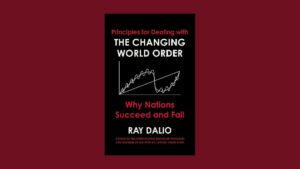“The strongest line of resistance against these pressures is a keen awareness of their existence and insidious power.”
– Max Gunther, Zurich Axioms
Herding is not a very good idea in stock markets. The equity cult in India is still in the nascent stage. Hardly 1-2% of India’s population has exposure to the stock markets compared to the deep penetration in other developed and even emerging markets. By and large, most of the ordinary investors, practically with philosophised precision, jump in and out of the market precisely at the wrong time. There is enough data to prove that. But, these are at the fiscal closing date and unfortunately don’t depict real evaporation of wealth, worth trillions of dollars of the masses, when they buy high and sell low.
It is not possible even for a smart trader, to catch the exact top and bottom, or buy-low sell-high as many oracles of the old street sermon. That may be good for talk shows by popular investment gurus on business television channels. But it is surely not difficult, even for an average investor, not to buy-high and sell-low. Through some learning, practice, and finding and following a true guide who may not necessarily be popular, one can get counted in the former category and avoid being at the giving side of the market rather than taking from the market.
One of the simple ways could be to track the stock’s, or index, long term mean. Buy when the stock is trading substantially below it and sell when it trades substantially higher than that. In fact, this should be the underlying rationale for regular investments and not popular Systematic Investment Plans (SIPs) which force you to fork out a fixed sum every month at pre-determined date, effectively increasing your average purchase price. Ideal SIP should involve buying more when prices are far below and selling, when these are far above the average in true practice of the principle of “buy low, sell high”. Find out what suits your own risk temperament which in turn depends on the time horizon of your investment. Back your judgement with sound fundamentals juxtaposed with the time element. There are no fixed formulas for winning in the stock market. If anyone claims to offer you the same, he may be harebrained as only a person who has been foolishly misguided will think so.
If you are always focused on investing according to the hot news, you may find yourself always behind, always at a disadvantage because you are not the first one to receive that ‘hot’ news. Do not break heads and burn holes in your bank account, betting on the latest news which is known to everyone, and that too before you. Rather worry about anticipating what would be in the news few weeks and months from now. The stock market always looks several months – six to twelve months – ahead and today’s news might just be noise to inhibit your intelligence.
Besides knowing the stock price or which celebrity analyst recommended it, you need to know a lot more about the company, seasonality in its business, the price behaviour and be able to anticipate major market shifts. Share prices constantly fluctuate as buyers and sellers haggle on a mutually agreeable price. Their fundamental worth however does not change minute-by-minute. Share prices are influenced by the following four types of forces:
- i) objective analysis of intrinsic value justified by available data;
- ii) factors influencing the future value justifiable by available facts;
iii) market forces driven by liquidity; and
iv) the perception about future price itself
All the forces are subjective and psychological in nature and thus inclined to be swayed by mass hysteria generated by popular news channels.
Remember, if a stock has had a good run up, it might be the time to sell (sell high). Similarly, if a stock has dropped like a rock, it might be a good time to buy (buy low). When the popular talk show host and the majority of pessimists turn optimists, calling it the best time to buy and taxi drivers and barbers offering best stock ideas; this might, in fact, be the right time to sell. Conversely, when celebrity investors wear bear skins on television, that may be the time to buy. That truly is buy low sell high.
























